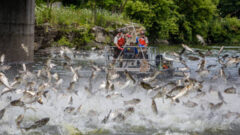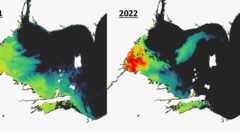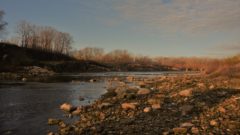From the Ice Age to Now: A Lake Erie timeline

Lake Erie covers about 9,900 square miles and stretches 240 miles from southwest to northeast with an average depth of 62 feet. It borders four states and the province of Ontario. About 12 million people live in the watershed, including 17 major metropolitan areas. More than 10 million people rely on the lake as a source of drinking water.
Great Lakes Now
https://www.greatlakesnow.org/2024/03/from-the-ice-age-to-now-a-lake-erie-timeline/



